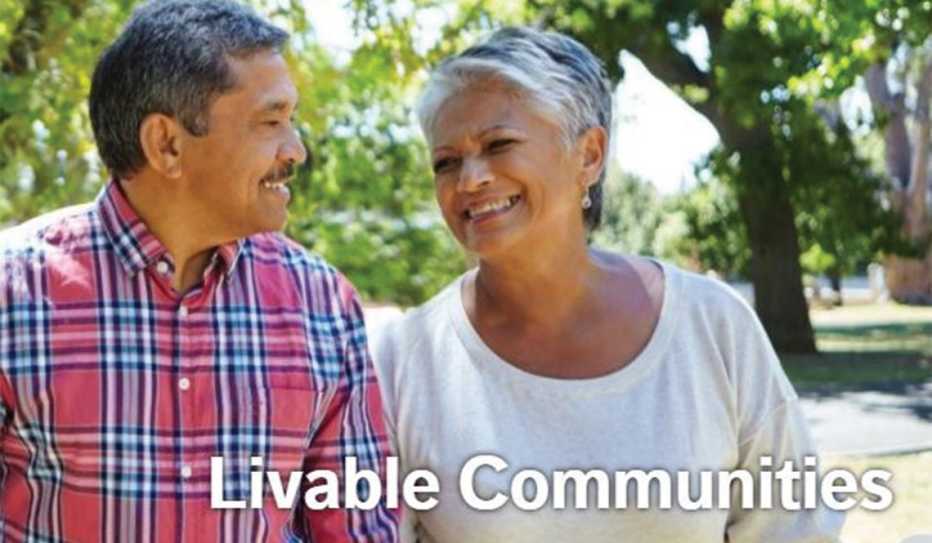AARP Hearing Center
"A livable community is one that is safe and secure. It offers choices in where to live and how to get around. And it equitably serves residents of all ages, ability levels, incomes, races, ethnicities, sexual orientations, gender identities, and other backgrounds. Livable communities:
- enhance personal independence,
- allow residents to remain in their homes and communities as they age, and
- provide opportunities for residents of all ages, ability levels, and backgrounds to engage fully in civic, economic, and social life.
Livability Principles


"Livable communities include essential features that allow residents of all ages and backgrounds to thrive." — AARP Policy Book
Livable communities include essential features that allow residents of all ages and backgrounds to thrive. These include mixed-use zoning , safe and varied transportation options, and diversity of housing types. Livable communities also have public spaces that benefit everyone. In addition, they provide access to essential businesses, such as grocery stores."
AARP Livable Communities Principles
"Policymakers on the federal, state, and local levels have important roles in designing livable communities where residents of all ages can participate fully. The following principles set out AARP’s broad goals for land use, housing, and transportation that create livable and resilient communities that can endure over time.
- Secure affordability: Communities should provide transportation, housing, and other services and features that are affordable to people of all income levels.
- Secure equitable access: All people—regardless of factors such as income, ability level, and background— should have access to affordable transportation and housing. Everyone should also have a safe and healthy environment in which to live.
- Ensure quality and choice: Individuals should have a range of high-quality options to meet their needs, including housing and transportation.
- Prioritize accessibility and the ability to age in place: People of all abilities and ages should be able to enjoy community services and features that meet their needs. They should be able to live in the setting of their choice and have increased access to destinations.
- Promote health, safety, and environmental sustainability: Communities should support the right of individuals from all incomes and backgrounds to live safe, secure, and healthy lives. Environmentally sustainable communities protect natural resources and create conditions, such as clean air and water, which improve health outcomes for residents over the long term.
- Achieve holistic policymaking: All communities should seek to improve the interconnectedness of issues such as health, wellness, safety, work, education, environment, and social engagement. Doing so enables residents across generations to live their best lives."
Visit Chapter 13 of the AARP Policy Book to learn more about:
- Creating Livable and Sustainable Communities
- Effective Planning
- Disasters and Extreme Weather
- Community Redevelopment and Revitalization
- Economic Development
- Livable Communities Financing
Spread the Word
- "In a Livable Community ..." handout (available in multiple languages)
From the AARP Policy Book 2023-2024































.jpg?crop=true&anchor=13,195&q=80&color=ffffffff&u=lywnjt&w=2008&h=1154)



























